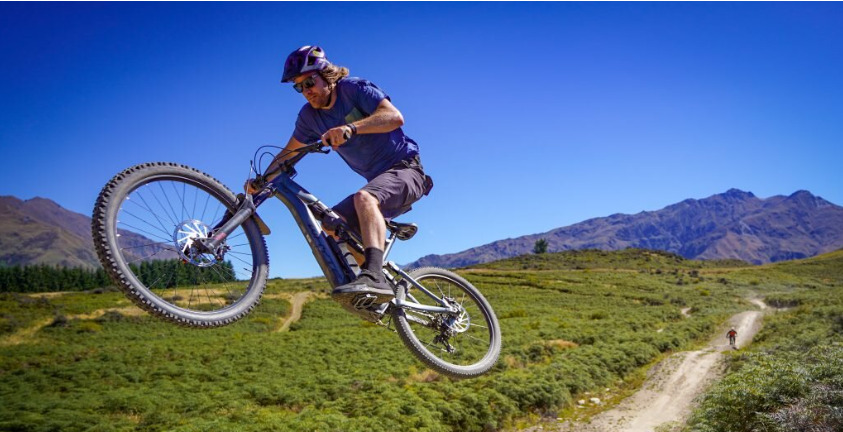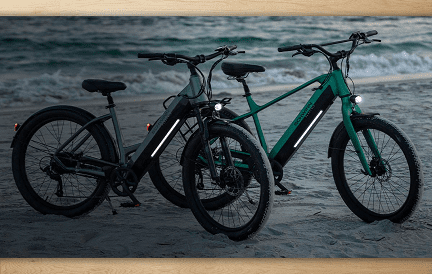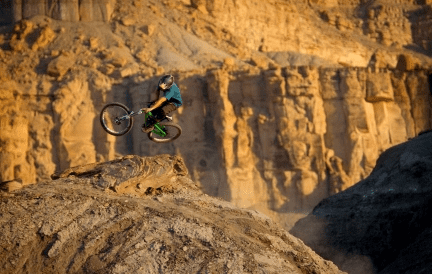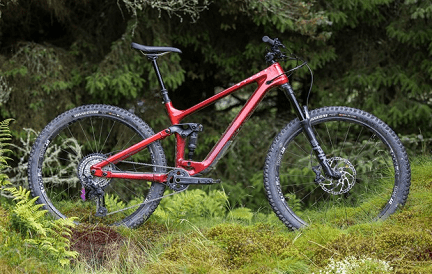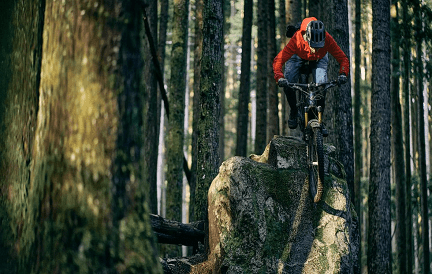If you like mountain biking, a 29er mountain bike can be your best friend to slay the tracks. There are numerous reasons to select one. The bike itself and the range of price can be a consideration. Read more to find out the best for you.
- Part 1: Opening: Introduction to Frames
- Part 2: Considerations for Frame Selection
- Part 3: Considerations for Price Selection
- Part 4: Frequently Asked Questions
- Part 5: Conclusion
Part 1: Opening: Introduction to Frames
One of the most important parts of a bicycle is the frame, which serves as a platform for the wheels and other accessories to be attached, it is the part that connects all the other parts. The modern and most common upright bicycle frame design is based on the safety bicycle and consists of two triangles: a primary triangle and a matched rear triangle. As noted before, one of the essential aspects of a bicycle is the frame. A bicycle’s frame is the most important part and the foundation upon which we put all other parts. The frame not only provides support and stability for the complete bike, but it also serves as a reference to the high quality of the materials used in its construction. In the case of mountain bikes, the frames should be ideal for off-road cycling over rugged terrain.

Mountain bikes have two types of frames: hardtail and full-suspension. A hardtail mountain bike is a versatile, all-terrain bicycle with rigid forks or front suspension but no rear shock. A hardtail is typically lighter and less expensive than a full-suspension bike, making it an excellent option for both novice and experienced riders. On the other hand, a full-suspension bike has both front and rear suspension. Full suspension frames have become a popular choice for most off-road situations, ranging from XC and trail to enduro. Like other mtbs, a 29er mountain bike also has different frames. The materials for the frames are also varied. A mountain bike can have an aluminum, steel, carbon fiber, or titanium frame. Each has advantages and disadvantages. You can buy the frame in accordance with your needs and the purpose of your biking.
Part 2: Considerations for Frame Selection
As mentioned before, mountain bike frames consist of hardtails and full suspensions, and they can have different materials. Let’s elaborate more about the materials.
Aluminum
Aluminum is both durable and dependable, as well as lightweight and nimble for the rider. It is also significantly less expensive than other common frame building materials, though it should be acknowledged that many low-end bicycles are constructed from low-quality high-tensile steel. But it’s important to remember that aluminum doesn’t prevent vibrations as well as other materials do, which makes the ride rougher. Although aluminum isn’t as strong as steel, but a good frame made of aluminum can still last for a long time. In fact, it can last up to seven years with proper care or maintenance.
Steel
Steel frames were the only option available in the early days of mass production of mountain bikes in the 1970s. Traditionally, the bike industry used to build bikes from steel because of its durability, strength, and comfort. As a matter of fact, many modern mountain bikes still use this old-school material. Steel has a superior strength-to-weight ratio and is one of the best shock absorbers available, but the additional weight of a steel frame can limit movement. Bike frames have been made from various materials over the years, with steel initially dominating. However, steel is easy to mend. When there is a crack or a bend, you can manage to fix it by yourself.
Carbon Fiber
Carbon fiber bikes are the lightest type of bicycle frame. Nonetheless, it is durable and tough enough to get you through even the most difficult rides. Carbon’s structure is also highly adaptable, making the entire structure far more durable. Stiffness is the primary advantage of using carbon as a bicycle frame material. It is because carbon fibers are flexible in one direction but stiff in the other. Layering the sheets allows different parts of the frame to react differently. This signifies that, unlike metal, a frame tube will have a variety of characteristics in addition to its structure. Because of this, bike frame designers are now able to create bicycles that are both compliant in the vertical direction and rigid in the lateral and torsion directions.
Titanium
The most remarkable characteristic of titanium is that it is as strong as steel but much lighter. Because of this, building frames out of it has a great strength-to-weight ratio. In addition to this, due to its ability to bend without losing its form, it serves well as an ideal material for shock absorption. It is also the most expensive option available on the list since the raw material is tough to work with and hence costly to extract. In any case, if you’re thinking about it, you’ll be relieved to learn that titanium does not become brittle or lose its elasticity as metal ages. A 20-year-old titanium frame rides almost identically to when you bought it the first time. However, this may not be advantageous in the long term.
Part 3: Considerations for Price Selection
The price of 29 mountain bikes is in a variety. And it depends on the kind of frame and materials used. Below are some mountain bike options with different price ranges that might interest you.
1. $2,000-$4,000
Kona Honzo CR Trail DL ($3,999)
Suspension: Hardtail (120mm)
Category: Trail
Gears: 1 x 11
Material: Carbon
The Kona Honzo is a carbon frame hardtail trail bike with a 29-inch wheel size that features premium-grade components. The Kona Honzo CR had a reputation at the time of its release as the innovative 29er hardtail. When the Honzo was first introduced, it was marketed as a heavy chromoly rig, not an XC bike. Alloy and carbon versions of the platform have evolved over time, including the Honzo CR, a carbon fiber version of Kona’s successful production 29er all-mountain hardtail released in 2017.
Fezzari Cascade Peak ($3,000)
Suspension: Full suspension (140mm front, 130mm rear)
Category: Trail
Gears: 1 x 12
Material: Aluminum
The Cascade Peak is an excellent choice for those who are willing to pay a bit extra upfront for higher-quality components. Both the SRAM GX drivetrain and the suspension configuration on this bike are pretty impressive, considering the price point at which they come in. Although the geometry is on the more traditional side, the Cascade Peak should prove to be an excellent choice for trail riders looking for a versatile option.
Kona Process 134 ($2,600)
Suspension: Full suspension (140mm front, 134mm rear)
Category: Trail
Gears: 1 x 11
Material: Aluminum
The Kona Process 134 offers a fantastic frame design and a synched linkage-driven single-pivot suspension to the masses with a more economical construction kit. This bike’s geometry and suspension should provide a significant return on investment while also reducing the need for additional parts.
2. Below $2,000
Salsa Timberjack SLX 29 ($1,799)
Suspension: Hardtail 130mm
Category: Trail
Gears: 1 x 12
Material: Aluminum
Trail riders will enjoy the Timberjack’s superior components and comfortable riding position, but all-mountain riders will be disappointed. It doesn’t matter how hard you try. The 130-millimeter hardtail design can’t keep up on downhill segments. The Timberjack is a wonderful choice if you want a well-equipped hardtail that won’t require any significant changes in the near future.
Treck X-Caliber 9 ($1,930)
Suspension: Hardtail 100mm
Category: XC
Gears: 1 x 12
Material: Aluminum
This 29 mountain bike has a racing reputation and is swift, sensitive, and agile on the track. Furthermore, the X-Caliber is one of the lightest bicycles on this list, making it easier to pedal efficiently and increasing its speed, regardless of whether you are climbing or coasting. It’s an affordable entry-level XC race bike or a good choice for longer, less strenuous trail rides. But on steeper trails with rocks and roots, it has a shaky demeanor due to its shorter suspension travel (100mm upfront) and more upright riding stance. This condition makes it less versatile.
Giant Stance 29 2 ($1,800)
Suspension: Full suspension (130mm front, 120mm rear)
Category: Trail
Gears: 1 x 10
Material: Aluminum
The Stance 2 features a 130-millimeter fork, Suntour shock, and 29-inch Maxxis tires for a smooth and speedy ride. The Stance’s components are inferior to those of hardtail models, but the 10-speed Shimano Deore gear and included dropper post are good additions. The sleek-looking Stance is a formidable climber and will perform admirably on flowing, less challenging trail routes. Moreover, its sturdy frame provides an excellent foundation for future modifications.
Part 4: Frequently Asked Questions
What Exactly is a 29er Mountain Bike
29ers, also known as two-niners, are mountain bikes and hybrid bikes designed to use 700c or 622 mm ISO (inside rim diameter) wheels, also known as 29″ wheels.
What are the Advantages of Riding a 29er
A 29er gains more momentum once rolling, which results in making more progress with less effort and gaining speed when rolling across open terrain. Also, a greater surface area of contact between the tire and the trail improves traction and control when ascending or cornering.
What Makes 29ers Preferable
Due to the larger diameter of the wheel, the 29er has a larger contact patch with the ground and accelerates considerably faster. Although slower than a 27.5 wheel, 29ers can maintain speed due to their superior rollover capabilities.
Are 29-inch Bicycles Faster
Smaller wheels accelerate more quickly, while larger wheels are more efficient on longer trips.
Is it Better to have Bigger Wheels
Due to the larger wheel radius, bicycles with larger wheels can travel faster than those with smaller wheels; they are also more tolerant of high speeds.
Is it Possible to Put a 29-inch Tire on a 27.5-inch Fork
Some forks that are 27.5 inches wide can fit a 29-inch wheel. However, the conversion reduces the distance between the tire and the fork’s arch. Consequently, the tire starts to throw more small rocks and other things at the arch.
Are 29ers Better at Climbing than other Models
The 29er bike is better at climbing hills. It’s a myth that bigger wheels are heavier, which hinders climbing. But if the climb is full of rocks and steps that slow you down, the bigger wheel will roll over these obstacles with less effort.
Are 700C the Same Size as 29er Tires
Most 29″ tires won’t fit 700C rims because they’re too wide, although the rim diameter is the same.
Is a 29er Harder to Pedal
Because they have a lower attack angle than 27.5-inch wheels, 29ers are better at rolling over trail obstacles. This means that the ride will be a little smoother, and you’ll have to work a little less to keep the bike going.
Why are Tires on Mountain Bikes so Large
Because of the enormous volume of the tires, you can run air pressures that are so low that they hardly register on the gauge of a standard air pump. They can rollover any terrain that would otherwise be impassable due to the resulting floatation.
Part 5: Conclusion
Mountain biking is definitely an exciting activity for people who are really into it, whether as a professional rider or a nuisance. A 29er mountain bike can be a good choice for you among so many options. Even though the attack angle is lower than 27.5-inch wheels, with bigger tires, the bike can travel faster than those with smaller tires. Not only that, but bigger tires are also more efficient on longer journeys. Hardtail or full suspension frames are all there in the market. The materials that you can choose are also in a variety. Whether you want to purchase a bike with an aluminum, steel, carbon fiber, or titanium frame. Again, it all depends on your budget and the kind of your biking.

